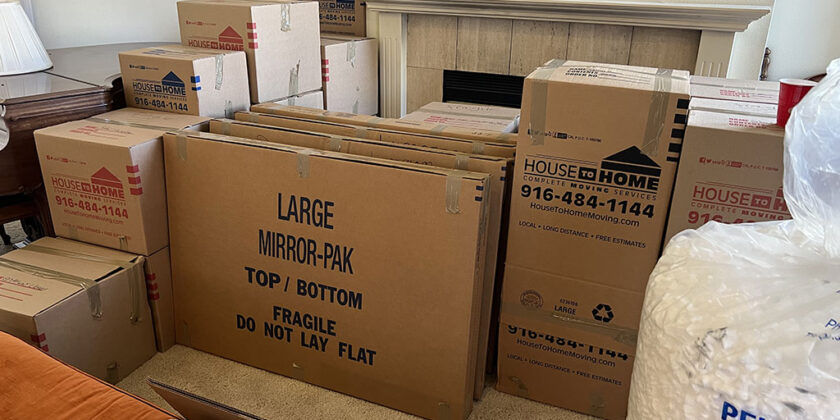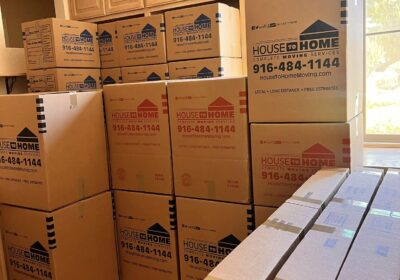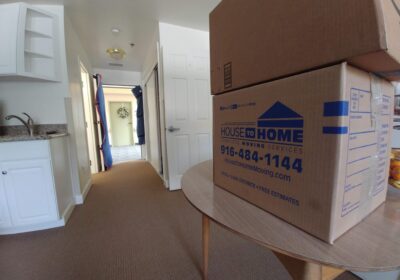
Inspect Delivered Boxes
You do have the household inventory you prepared or received during the moving preparations, right? Check each moving box against the detailed list as it is carried inside your new home, and if a box or a household item happens to be missing, notify the moving crew right away and check together if it was left in the moving truck by mistake.
Get Your Utilities Up And Running
You should have arranged the connection of the main house utilities before the move, but if you haven’t done it for one reason or another, do so without delay. Naturally, the first utility companies to call are the power and water providers – things will look much brighter and smoother once you have electricity, gas and running water in your new house.
Unpack Essentials
Proceed by unpacking your essentials boxes and prepare the two most important rooms for normal use – the bedroom and bathroom. Moving days have the tendency to drain out people’s energy so you’ll definitely need a place to lay your weary body at the end of the most stressful day when moving. Assemble your bed (if necessary), unpack the box labeled as “Bedding” and prepare your bed for sweet dreams. Before you call it a day, however, you’ll desperately need to take a refreshing shower, so dig into the “Bathroom” container and take out the shower curtains, the towels, your favorite bathrobe, plus all the toiletries you’ll need to take away the stress and dirt of moving day.
Get Organized
It’s very important that you find the time to prioritize your post-move time. Take out a notebook and start writing down all the immediate tasks that you’ll have to take care of in the next few days, and even weeks. Just like the moving calendar enabled you to have a stress- and trouble-free move, this prioritized to-do list will clearly jump-start the speedy process of settling in your new home and your smooth period of acclimatization to the unknown surroundings.
Inspect Your House Thoroughly
One of the first things to do after moving into a new house is to get to know your place inside out. Locate your favorite magnifying glass and inspect every nook and cranny of your new home as meticulously and passionately as if your birth name were Sherlock Holmes. Inspect each and every room for visible signs of damage, especially from water or fire. Check for plumbing leaks, dripping faucets, and running toilets. One clever trick to make sure there are no water leaks of any kind is to register the readings of your water meter at the start and end of a period of several hours when no water is used anywhere in the house. If the two readings differ, then it’s a sure sign that you have a leaking problem and you’ll need to localize and fix it (or have it fixed).
Locate Fuse Box And Main Water Valve
Make sure you know where your circuit breaker box and main water valve are located in case of emergencies, or just in case you’re about to fix a power or water issue and need to turn off the electricity or cut off the water supply.
Secure Your New Home
Once the utilities have been connected, the house has been inspected for problems and the emergency centers located, it’s time to secure your new home against unauthorized access or harmful acts of nature. Change the locks on all outside doors to ensure that you and your family are the only persons who have access to your new home. Double-check all windows and doors and make sure they close securely. Install smoke detectors in every room. Provide at least one functional fire-extinguisher per floor. Purchase a few first-aid kits. Devise an escape plan out of the house in case of emergencies and make it known to each family member. Consult specialists and consider installing a burglar alarm, especially if your home is situated in a neighborhood with a relatively bad reputation.
Connect Major Appliances
If you have chosen to move your fridge, freezer, washing machine or dishwasher instead of selling them, giving them away to friends, donating them to charity or just throwing them away, now is the time to connect them and thus finish the process of unpacking and setting up the most delicious room in your new house or apartment – the kitchen. Refrigerators are the most fragile appliances from the ones mentioned above and extra care should be taken in their preparation and actual relocation. Just like millions of other people, you’re probably very interested in knowing the answer to the question, “How long do you have to let a fridge sit after moving it?”. You need to leave your fridge upright on its final kitchen spot for at least 3 full hours before you can plug it in and turn it on after moving. This is roughly the time it takes for the oil, which must have escaped the compressor and flown into the cooling lines, to return to the heart of the cooling mechanism – the compressor.
Continue Unpacking
You already unpacked the essentials boxes and furnished and arranged the most frequently used rooms, but what about the rest of your new residence? Step by step, the unpacking process will stretch out and reach the living room, spare guest room, garage, basement, attic and any other storage areas of your home.
Recycle Packing Materials
Unpacking will leave you with plenty of packing materials which you may no longer need. Of course, a number of the moving boxes you used during the relocation will be in such a bad shape that you will have no other option but to throw them away for recycling. Others, however, will be good enough to survive the stress of another move and those you can keep for yourself, give to friends in need or try to sell (however, don’t expect large profitable margins from their sale).




